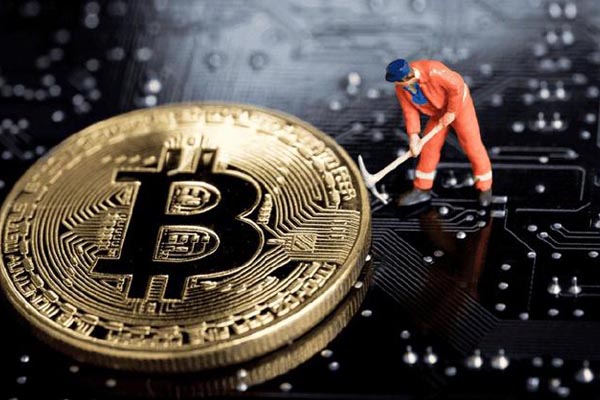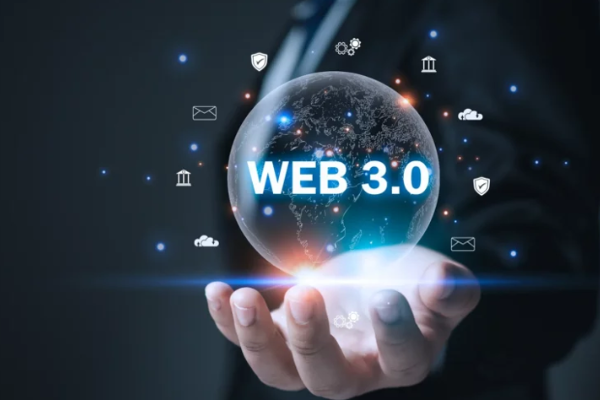US SEC defines "POW mining" as not a securities activity

When a miner combines computing resources with other miners to increase the success rate of mining, it is not based on a reasonable expectation of profit from the entrepreneurial or managerial efforts of others.
Introduction:
As part of its efforts to clarify the application of federal securities laws to the field of crypto assets, the U.S. Securities and Exchange Commission (SEC) Division of Corporation Finance now issues this statement to explain its position on the "mining" activities of certain "Proof-of-Work" networks (hereinafter referred to as "PoW"). Specifically, this statement involves activities in public, permissionless networks that participate in the network consensus mechanism through programmatic functions built into the protocol itself and obtain or use corresponding crypto assets to maintain the operation and security of the network technology. This statement refers to such crypto assets as "Covered Crypto Assets" and their mining activities on PoW networks as "Protocol Mining".
Protocol Mining:
The network relies on cryptography and economic mechanism design to verify network transactions and provide settlement guarantees to users without the need for specially designated trusted intermediaries. Each network operates under a specific software protocol (computer code) that programmatically enforces specific network rules, technical requirements, and reward distribution. Each protocol includes a "consensus mechanism," a method by which unconnected computer nodes across the network can reach a consensus on the state of the network. Public, permissionless networks allow anyone to participate in the operation of the network, including validating new transactions in accordance with the network's consensus mechanism.
PoW is a consensus mechanism that incentivizes transaction validation by rewarding network participants, called "miners." PoW involves validating transactions on the network and packaging them into blocks that are added to the distributed ledger. "Work" in PoW refers to the computing resources that miners use to validate transactions and add new blocks. Miners do not need to own the Covered Crypto Asset on the network to validate transactions.
Miners use computers to solve cryptographic puzzles in the form of complex mathematical equations. Miners compete with each other, and the first miner to solve the puzzle is responsible for accepting and validating (or proposing) a block of transactions from other nodes and joining the network. Miners are "rewarded" for their validation services, which are usually newly minted or created Covered Crypto Assets issued in accordance with the terms of the protocol. Therefore, PoW incentivizes miners to invest the necessary resources to add valid blocks to the network.
Miners can only receive rewards after other nodes in the network verify that their calculations are correct and valid through the protocol. When a miner finds the correct solution, it broadcasts it to other miners to verify whether they have solved the problem correctly and received the reward. Once verified, all miners add the new block to their own copies of the network. PoW ensures network security by requiring miners to invest a lot of time and computing resources to verify transactions. This verification method not only reduces the possibility of damaging the network, but also reduces the possibility of miners tampering with transactions (such as double-spending attacks).
In addition to solo mining, miners can also join a "mining pool" to combine computing resources with other miners to increase the chances of successfully verifying transactions and mining new blocks. There are many types of mining pools, each with different operating methods and reward distribution mechanisms. Mining pool operators are usually responsible for coordinating miners' computing resources, maintaining the hardware and software facilities of the mining pool, managing the mining pool's safety precautions, and ensuring that miners receive rewards. In return, the mining pool operator deducts a certain fee from the rewards received by the miners as a commission. The payment model of mining pool rewards varies, but is generally distributed according to the proportion of computing resources contributed by the miners to the mining pool. Miners are not obligated to continue to participate in a mining pool and can choose to leave at any time.
The position of the Department of Corporate Finance on the agreement mining activities:
The Department of Corporate Finance believes that in the circumstances described in this statement, the "mining activities" (Mining Activities, as defined below) related to the agreement mining are not the offering and sale of securities under Section 2(a)(1) of the Securities Act of 1933 and Section 3(a)(10) of the Securities Exchange Act of 1934. Therefore, the Department of Corporate Finance believes that the entities involved in mining activities do not need to register the relevant transactions with the Commission under the Securities Act, nor do they need to apply any registration exemption provisions provided by the Securities Act.
Protocol Mining Activities Covered by This Statement:
Corporate Finance’s position above relates to the following protocol mining activities and transactions (referred to as “mining activities” and a single activity as a “mining activity”):
Mining covered crypto assets on a PoW network;
The role of mining pools and pool operators in the protocol mining process, including their role in earning and distributing rewards.
Only mining activities involving the following types of protocol mining apply to this statement:
Solo Mining: Miners use their own computing resources to mine covered crypto assets. Miners can operate nodes independently or in collaboration with others.
Mining Pool: Miners combine computing resources with other miners to increase the chances of successfully mining a new block. Reward payments may be paid directly to miners from the network or indirectly through mining pool operators.
Specific analysis:
Securities Act Section 2(a)(1) and Securities Exchange Act Section 3(a)(10) both define “security” enumerably, including a variety of financial instruments such as “stocks,” “notes,” and “bonds.” Because the crypto assets covered are not explicitly enumerated in the definition, we analyze certain transactions in protocol mining based on the “investment contract” test proposed in SEC v. W.J. Howey & Company (the “Howey Test”). The “Howey Test” is intended to analyze transaction arrangements or instruments that are not within the statutory definition based on economic reality.
The key to the economic reality analysis is whether the transaction involves investing funds in an enterprise in the expectation of reasonably obtaining profits from the entrepreneurial or managerial efforts of others. The federal court further explained after the Howey case that such “other efforts” must be “undeniably important, that is, management efforts that are decisive to the success or failure of the enterprise.”
Solo Mining:
Solo mining is not based on the reasonable expectation of obtaining profits from the entrepreneurial or managerial efforts of others. Miners provide their own computing resources to maintain network security and receive rewards as stipulated in the network protocol. Miners' expectations of receiving rewards do not rely on the management efforts of any third party, but rather stem from their own administrative or technical activities such as maintaining the network, verifying transactions, and adding new blocks. Therefore, rewards should be considered as compensation for miners' services to the network, rather than profits from the entrepreneurial or management efforts of others.
Mining Pool:
Similarly, when miners combine computing resources with other miners to increase the success rate of mining, it is not based on a reasonable expectation of profit from the entrepreneurial or management efforts of others. Miners' expected returns mainly come from their own computing resources. The management activities provided by mining pool operators are mainly administrative or technical in nature, which may benefit miners, but are not sufficient to meet the "efforts of others" standard of the Howey test. Miners choose to join mining pools not expecting to passively profit from the management activities of mining pool operators.









